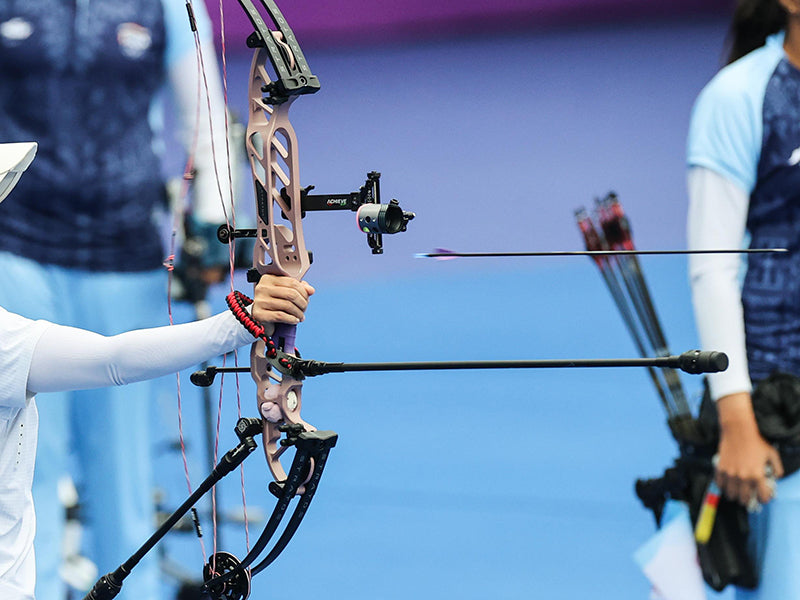
Choosing the Right Bow: A Comparison of Compound, Recurve, and American Hunting Bows
Share
When it comes to archery, one of the most important decisions a bowman can make is selecting the right bow. With a variety of options available, each type of bow offers unique features that cater to different styles of shooting and individual preferences. In this post, we’ll take a closer look at three popular types of bows—compound bows, recurve bows, and American hunting bows (longbows)—and compare their advantages to help you make an informed decision.
1. Compound Bows: Precision and Power
Advantages:
Efficiency and Accuracy: Compound bows are known for their mechanical advantages, which make them more efficient than traditional bows. With pulleys or cams, the draw weight is reduced once the bow is fully drawn, allowing the archer to hold the bow steady with less effort. This “let-off” feature makes it easier to aim and shoot with high precision.
Customization: Compound bows can be highly customized in terms of draw weight, length, and other features, which is ideal for archers looking for a specific fit. This allows both beginners and experienced archers to fine-tune their equipment for optimal performance.
Power: Thanks to the cams and pulley system, compound bows generate higher arrow speeds, making them perfect for both target shooting and hunting. The increased power helps in achieving longer shooting distances and more powerful shots.
Stability and Consistency: The design of the compound bow offers greater stability, which helps in maintaining consistent shots. This is especially important in competitive archery and hunting.
Disadvantages:
Complexity: The mechanical components of compound bows require more maintenance, and the setup can be more complicated than other bow types.
Size and Weight: Compound bows tend to be heavier and bulkier, which can be less convenient for those who prefer lightweight gear.
2. Recurve Bows: Tradition and Versatility
Advantages:
Simple Design: Recurve bows have a simple and elegant design, with limbs that curve away from the archer. This design gives the bow more power and speed than straight-limbed bows while still being relatively easy to use. The simplicity of the recurve bow makes it popular in traditional archery, including Olympic archery.
Portability: Due to their lightweight and compact design, recurve bows are often favored by archers who need to move quickly or travel long distances. They're easy to carry and don’t require as much maintenance as compound bows.
Versatility: Recurve bows are suitable for a wide range of uses, including target shooting, hunting, and even field archery. This makes them an excellent choice for those who want a bow that can perform well in different situations.
Tradition: Recurve bows hold a rich history and are still a staple in many archery disciplines. They offer a direct, intuitive shooting experience, making them ideal for those who appreciate the traditions of archery.
Disadvantages:
Less Power than Compound Bows: While recurve bows are powerful for their size, they don’t quite match the arrow speed and power of compound bows, especially for long-range shots.
Steeper Learning Curve: The lack of let-off and the absence of mechanical systems in recurve bows means the archer needs more skill and stamina to hold the bow at full draw.
3. American Hunting Bows (Longbows): A Classic Choice for Hunters
Advantages:
Smooth Draw and Shot: Longbows are known for their smooth and forgiving draw. Their simple, curved design allows for a fluid shooting experience, which many hunters and traditional archers prefer.
Durability and Reliability: Longbows, especially those made from durable wood or composite materials, are built to last. With minimal moving parts, longbows require little maintenance and can withstand a variety of conditions, making them excellent for outdoor hunting.
Silent Shots: Longbows are typically quieter than compound bows, which is a huge advantage for hunters who need to remain stealthy in the field.
Classic and Authentic Feel: Many archers appreciate the historical significance of longbows. The traditional appeal of this type of bow connects archers to centuries of archery history.
Disadvantages:
Lower Power and Accuracy: While longbows offer a smooth and enjoyable shooting experience, they lack the raw power and precision of compound bows. This makes them less suited for longer distances or hunting large game.
Physical Demands: Longbows require more strength to draw than recurve and compound bows, as there are no mechanical systems to assist the shooter. This can make them more difficult to handle, especially for beginners or those with limited upper body strength.
Conclusion: Which Bow Is Right for You?
The right bow for you ultimately depends on your preferences, experience level, and intended use. Here’s a quick summary to help guide your decision:
Compound Bows are ideal for those looking for high perf